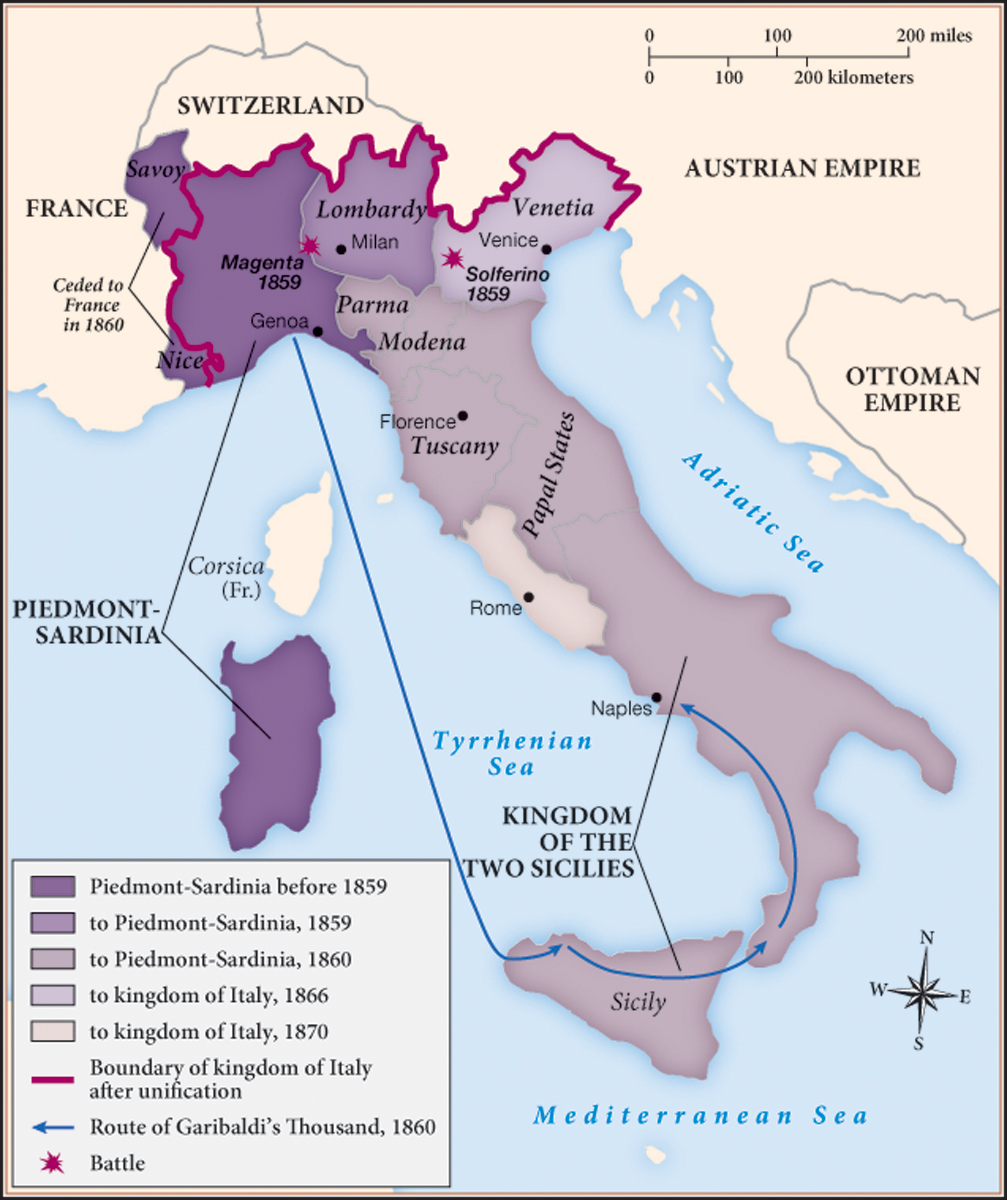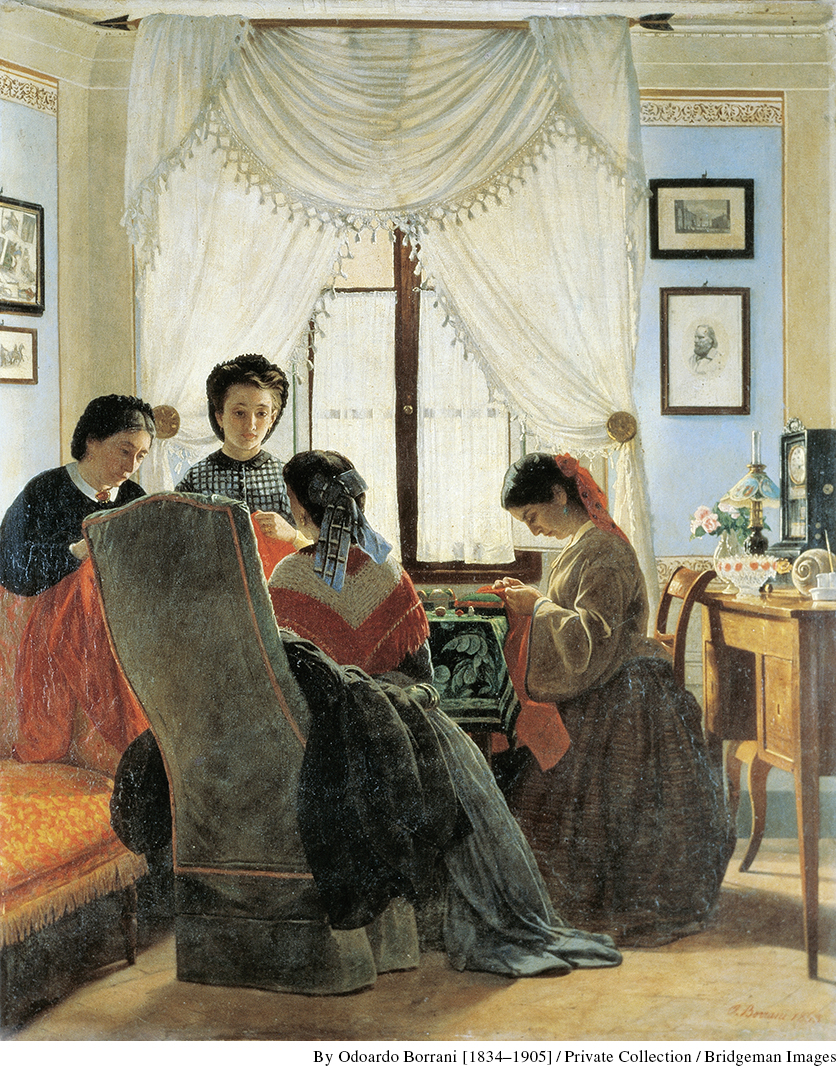Cavour, Garibaldi, and the Process of Italian Unification
Printed Page 716
Important EventsCavour, Garibaldi, and the Process of Italian Unification
Despite the failure of the revolutions of 1848, hope for national unification remained strong in the Italian states, aided by diplomatic instability across Europe. The pragmatic Camillo di Cavour (1810–1861), prime minister of the kingdom of Piedmont-Sardinia from 1852 until his death, had a Realpolitiker’s vision of how to unify the Italian states. A rebel in his youth, Cavour in his maturity organized steamship companies, played the stock market, and inhaled the heady air of modernization during his travels to Paris and London. He promoted economic development rather than idealistic uprisings as the means to achieve a united Italy. As a skilled prime minister, Cavour helped King Victor Emmanuel II (r. Piedmont-Sardinia 1849–1861, r. Italy 1861–1878) achieve a strong Piedmontese economy and a modern army as the foundation for Piedmont’s claim to lead the unification process (Map 22.2).

To unify Italy, however, Piedmont would have to confront Austria, which governed the northern provinces of Lombardy and Venetia and exerted strong influence over most of the peninsula. Cavour turned for help to Napoleon III, who promised French assistance in exchange for the city of Nice and the region of Savoy. Napoleon III expected that France rather than Austria would then influence the peninsula thereafter. Sure of French help, Cavour provoked the Austrians to invade northern Italy in April 1859. The cause of Piedmont-Sardinia’s monarchy now became the cause of nationalist Italians everywhere, even those who had supported romantic republicanism in 1848. The French and Piedmontese armies used the newly built Piedmontese railroad to move troops, thereby achieving rapid victories. Napoleon, suddenly fearing the growth of Piedmont as a potential competing force, independently signed a peace treaty with Austria that gave Lombardy, but not Venetia, to Piedmont. The rest of Italy remained disunited, leaving Cavour’s nationalist ambitions still to be realized.
Napoleon III’s plan to keep Italy disunited was soon derailed. Support for Piedmont continued to swell among Italians. Giuseppe Garibaldi (1807–1882), a committed republican and veteran of the revolutions of 1848, set sail from Genoa in May 1860 with a thousand red-shirted volunteers (many of them teenage boys) to liberate Sicily. In the autumn of that year, King Victor Emmanuel II’s victorious forces descending from the north and Garibaldi’s moving up from the south met in Naples. Garibaldi threw his support to the king, and in 1861, the kingdom of Italy was proclaimed with Victor Emmanuel as its ruler.

Exhausted by a decade of overwork, Cavour died within months of leading the unification, leaving lesser men to organize the new Italy. The task ahead was enormous and complex: there was still no common Italian language; 90 percent of the peninsula’s inhabitants spoke local dialects. Moreover, consensus among Italy’s elected political leaders was often difficult to reach after the war, and admirers of Cavour, such as Verdi (who had been made a senator), quit the quarrelsome political stage. Politicians from the wealthy commercial north and the impoverished agricultural south disagreed over issues like taxation and development, as they often do even today. Finally, Italian borders did not yet seem complete because Venetia and Rome remained outside them, under Austrian and French control, respectively. Holding the new nation together amid these difficulties was the romanticized retelling of the Italian struggle for freedom from foreign and domestic tyrants under the daring leadership of Garibaldi and his Red Shirts—a legend that papered over Cavour’s economic and military Realpolitik.